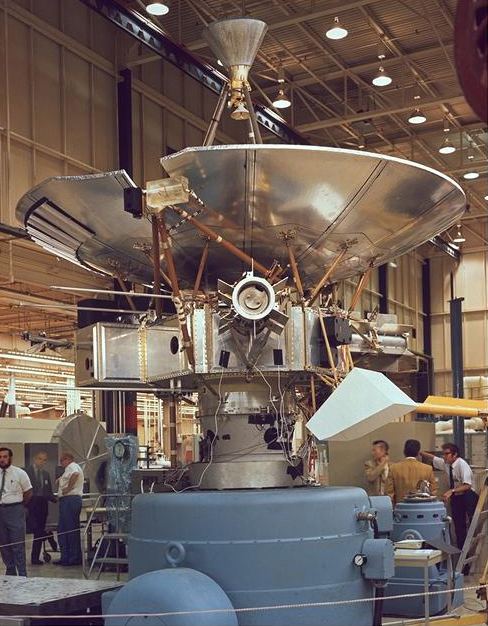 | ||
The Pioneer program is a series of United States unmanned space missions that were designed for planetary exploration. There were a number of such missions in the program, but the most notable were Pioneer 10 and Pioneer 11, which explored the outer planets and left the solar system. Pioneer 10 and Pioneer 11 carry a golden plaque, depicting a man and a woman and information about the origin and the creators of the probes, should any extraterrestrials find them someday.
Contents
Naming
Credit for naming the first probe has been attributed to Stephen A. Saliga, who had been assigned to the Air Force Orientation Group, Wright-Patterson AFB, as chief designer of Air Force exhibits. While he was at a briefing, the spacecraft was described to him as a "lunar-orbiting vehicle with an infrared scanning device." Saliga thought the title too long and lacked theme for an exhibit design. He suggested "Pioneer" as the name of the probe since "the Army had already launched and orbited the Explorer satellite and their Public Information Office was identifying the Army as 'Pioneers in Space,'" and by adopting the name the Air Force would "make a 'quantum jump' as to who really [were] the 'Pioneers in space.'"
Early Pioneer missions
The earliest missions were attempts to achieve Earth's escape velocity, simply to show it was feasible and study the Moon. This included the first launch by NASA which was formed from the old NACA. These missions were carried out by the US Air Force and Army.
Able space probes (1958–1960)
Most missions here are listed with their most recognised name, and alternate names after in parenthesis.Juno II lunar probes (1958–1959)
Later Pioneer missions (1965–1978)
Five years after the early Able space probe missions ended, NASA Ames Research Center used the Pioneer name for a new series of missions, initially aimed at the inner Solar System, before the bold flyby missions to Jupiter and Saturn. While successful, the missions returned much poorer images than the Voyager program probes would five years later. In 1978, the end of the program saw a return to the inner Solar System, with the Pioneer Venus Orbiter and Multiprobe, this time using orbital insertion rather than flyby missions.
The new missions were numbered from Pioneer 6 (alternate names in parentheses).
Pioneer 6, 7, 8, and 9
The spacecraft in Pioneer missions 6, 7, 8, and 9 comprised a new interplanetary space weather network:
Pioneer 6 and Pioneer 9 are in solar orbits with 0.8 AU distance to the Sun. Their orbital periods are therefore slightly shorter than Earth's. Pioneer 7 and Pioneer 8 are in solar orbits with 1.1 AU distance to the Sun. Their orbital periods are therefore slightly longer than Earth's. Since the probes' orbital periods differ from that of the Earth, from time to time, they face a side of the Sun that cannot be seen from Earth. The probes can sense parts of the Sun several days before the Sun's rotation reveals it to ground-based Earth orbiting observatories. If a powerful solar magnetic storm is formed, they can warn Earth in advance.
